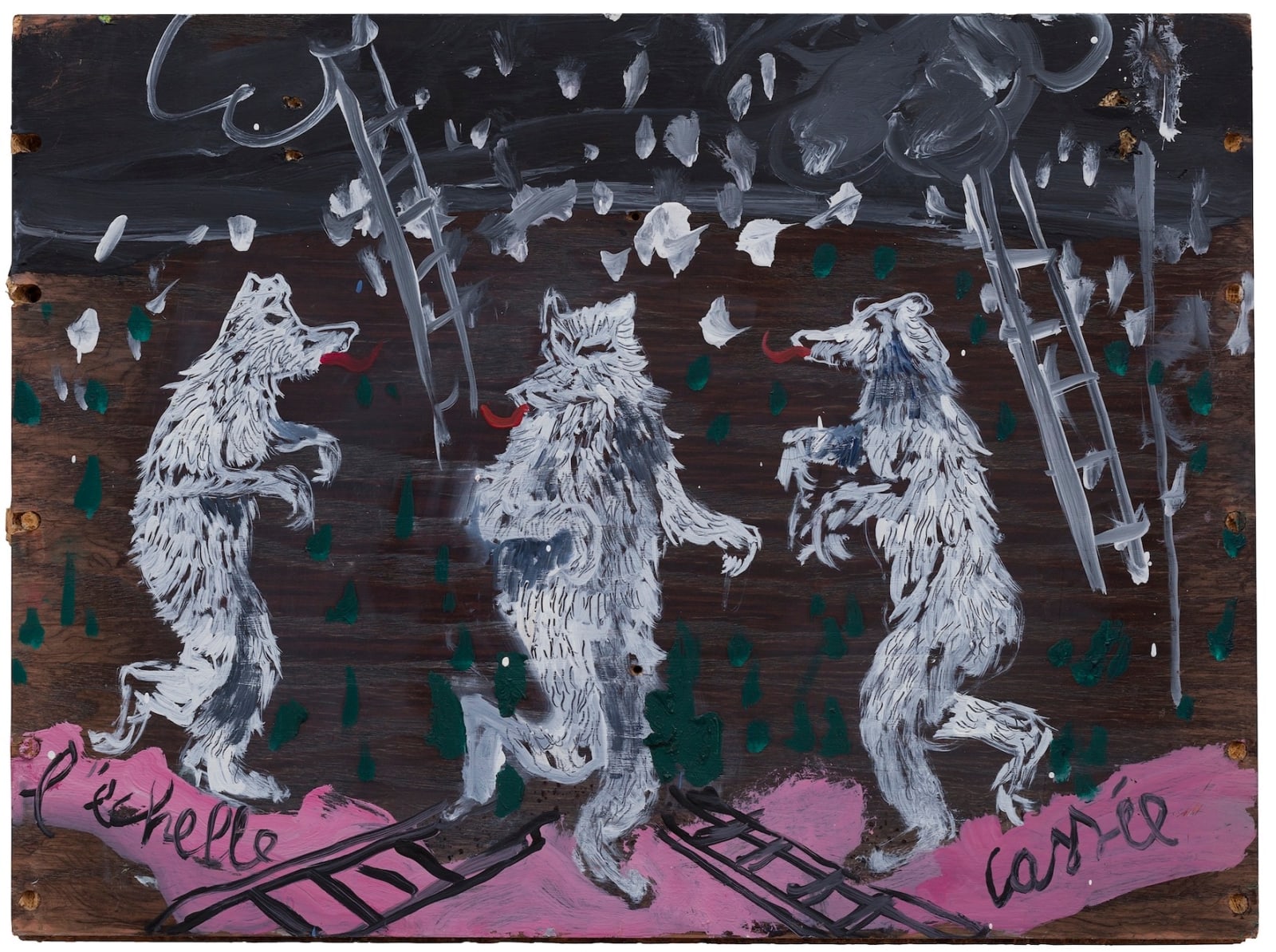Philippe Vandenberg BE, 1952-2009
La danse, 1997-98
Oil on wood
Huile sur bois
Huile sur bois
39 x 52 cm
15 3/8 x 20 1/2 inches
15 3/8 x 20 1/2 inches
PV003
© Estate Philippe Vandenberg
The artwork titled 'La Danse' features three bears engaged in a dance against the back-drop of two ladders extending toward the sky. This is a reference to art history, reminiscent...
The artwork titled "La Danse" features three bears engaged in a dance against the back-drop of two ladders extending toward the sky. This is a reference to art history, reminiscent of a similar dance performed by three figures at the Louvre in Paris. These figures are the "Graces" from Pieter-Paul Rubens' work "The Three Graces," gracefully posed in an Arcadian setting. While Rubens presents an almost paradisiacal scene, Vandenberg depicts the fallen state of the world. The Graces have become bears. Refinement and eroticism give way to human instincts: the bear within. Vandenberg doesn't idealize a return to a natural order of things; instead, he creates an image of the unfree human, subjected to their basest desires. The bear here is a circus bear, dancing to the tune of greed, lust for power, and sexual lust, yet shackled by the chains of their unattainable fulfillment. The path to paradise, as conveyed in this artwork, has been snatched away. The ladders leading to it are broken: "l'échelle cassée."
Provenance
- The Estate of Philippe Vandenberg, BrusselsExhibitions
- KANAL, Brussels, Gates (Might) Open Soon, 9-7-2021 - 16-7-2021
1
on
5
